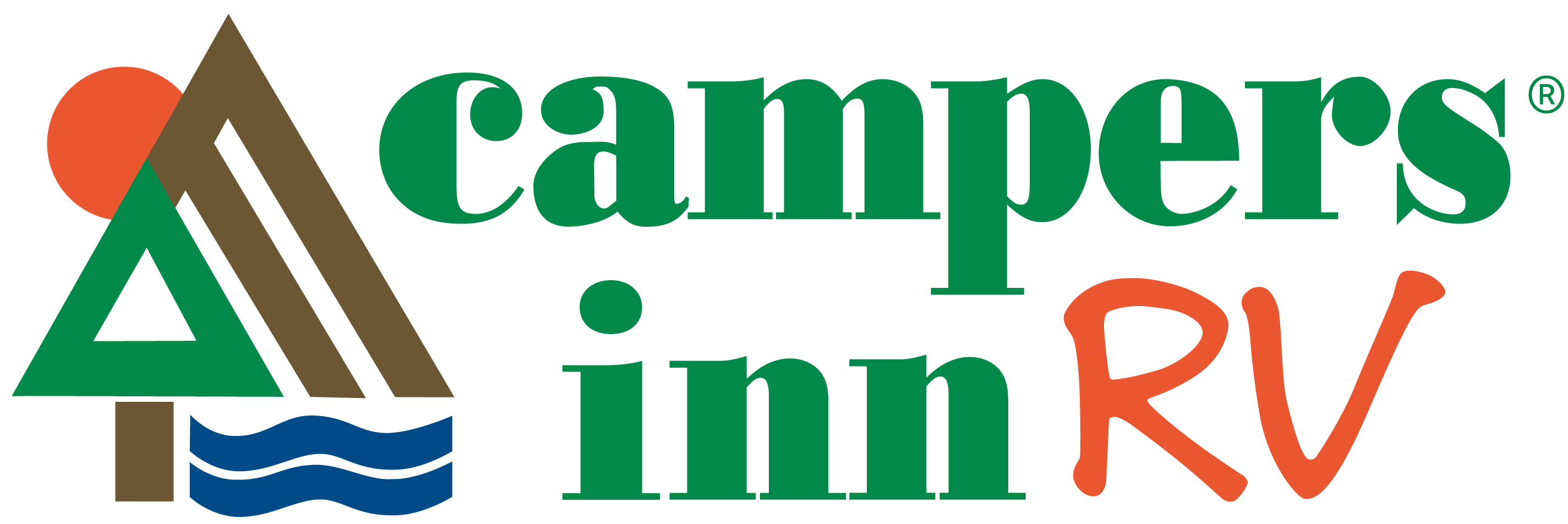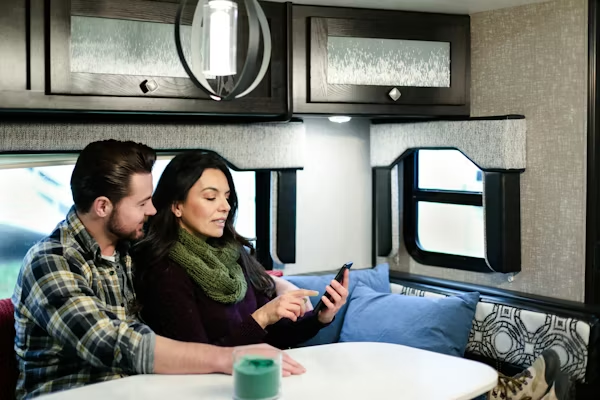The Ultimate Used RV Inspection Checklist | Free Printable
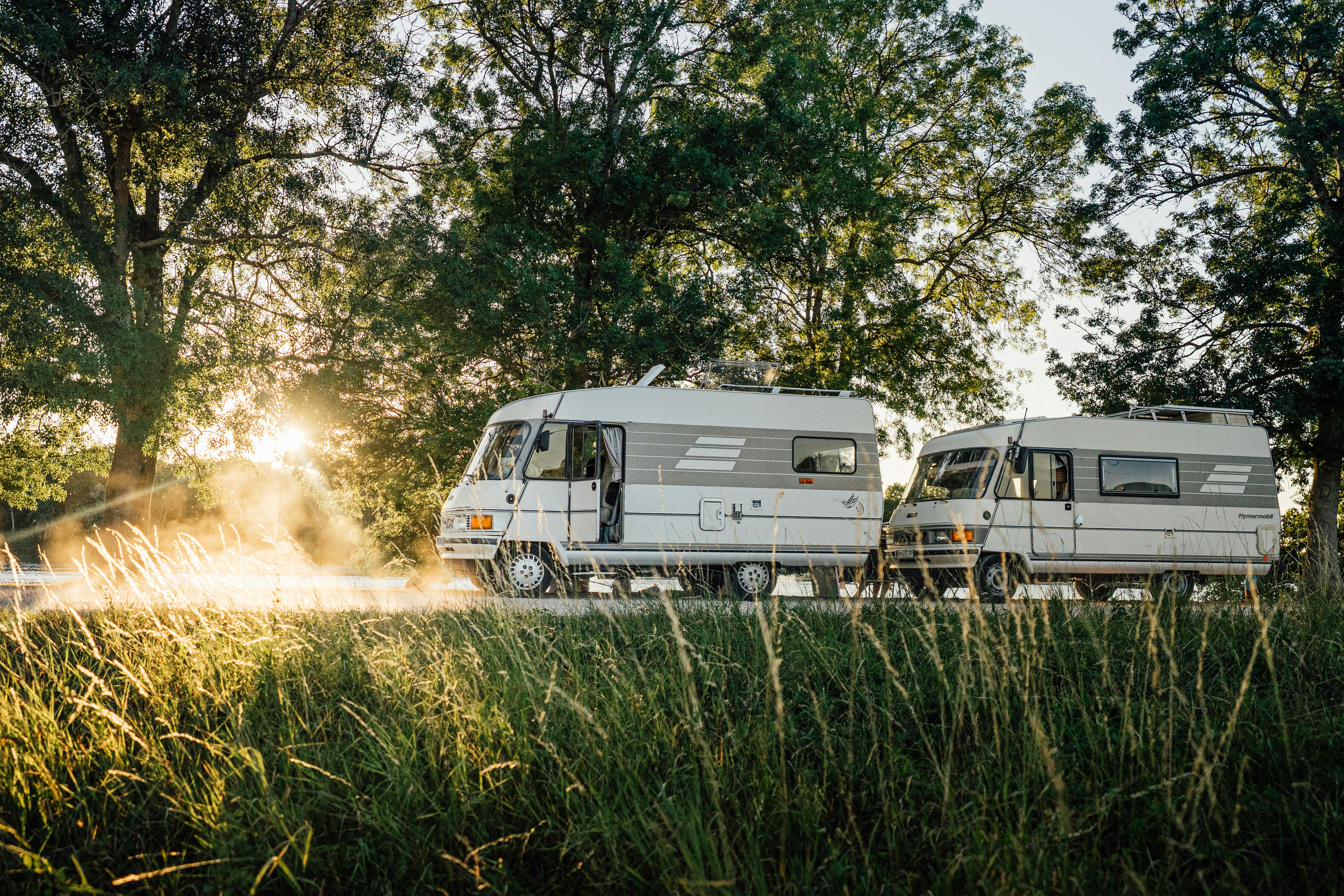
Buying a used RV can save you thousands, but only if you know what to look for. Too many RV shoppers fall in love with a unit’s floor plan or price tag, only to discover hidden problems later. Roof leaks, water damage, frame rust, or worn-out electrical systems can turn your dream rig into a money pit.
That’s why we created The Ultimate Used RV Inspection Checklist, a step-by-step guide to help you inspect every inch of your RV before you buy. From roof seals to tire tread, this list ensures nothing slips through the cracks.
Why an RV Inspection Matters Before You Buy
A used RV can offer tremendous value, but only if it has been properly maintained. Every component, from the roof to the frame, plays a role in keeping you safe and comfortable on the road. A used rig might look spotless on the surface while hiding serious (and expensive) issues underneath. Over time, wear and exposure to the elements can cause damage that may not be visible at first glance. Without a detailed inspection, those small issues can grow into costly repairs once you hit the highway.
A careful review helps identify signs of water intrusion, electrical faults, and mechanical wear before they become major problems. It also provides insight into how the RV was cared for by the previous owner. Maintenance records, tire condition, and appliance functionality all tell part of a story.
|
Did you know? A single water leak can cost over $5,000 in repairs if not caught early. |
Beyond preventing unexpected repairs, an inspection supports smarter negotiations and can help you:
- Save money on costly post-purchase repairs
- Stay safe by catching mechanical or electrical faults
- Protect your resale value by maintaining a solid foundation
- Buy with confidence, knowing exactly what you’re getting
By performing a complete evaluation, or purchasing from a dealer who does, you gain confidence that your next journey will begin on solid ground. All Campers Inn RV used units are fully inspected before sale. Learn more about our certified process.
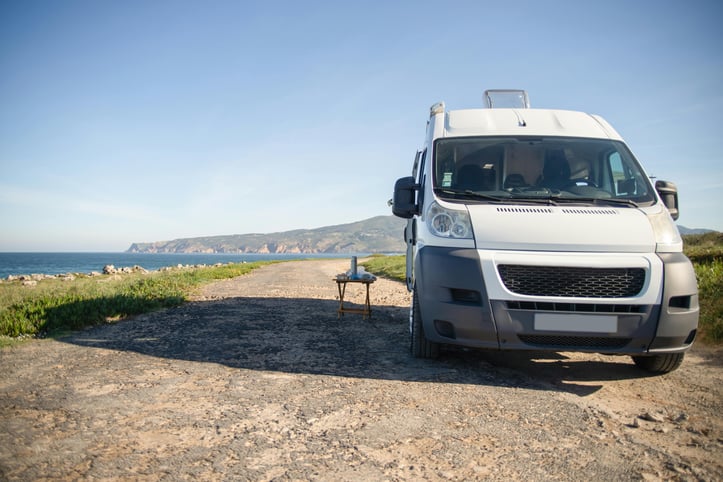
The Complete Used RV Inspection Checklist
Exterior Inspection
The exterior of an RV reveals a great deal about its overall condition. Start by walking around the entire unit, taking note of any cracks, dents, or discoloration on the body panels. Look closely at the roof, seams, and corners for dried or cracked sealant, which can allow moisture to seep inside. Even a small leak can lead to structural damage or mold if ignored.
Inspect the windows, doors, and slide-outs for tight seals and smooth operation. Gaps or uneven alignment may indicate underlying frame or water issues. Examine the awning for tears, mildew, and secure mounting hardware. If possible, extend and retract it to ensure it operates properly.
Tires deserve special attention. Check for uneven wear, dry rot, or sidewall cracks. Tires that appear new but have old date codes can still be unsafe. Don’t overlook the undercarriage - look for rust, corrosion, or damage to stabilizers and holding tanks.
Lighting is another key element. Confirm that headlights, brake lights, and turn signals work correctly. A complete exterior review sets the foundation for a successful inspection and helps you spot signs of neglect before making a commitment.
Pro Tip: Bring a flashlight and a moisture meter if you’re inspecting a unit privately.
Interior Inspection
Once the exterior passes a visual check, move inside and take time to examine the details. The interior can reveal how an RV was treated throughout its lifetime. Start by inspecting the floor for soft spots or uneven areas, which may signal hidden water damage. Look closely to ceilings and walls for discoloration, bubbling, or a musty odor. These are all signs that moisture has made its way in.
Open every cabinet, drawer, and storage compartment. Check that doors close smoothly and that there are no signs of mold or pests. Turn on interior lights and test outlets using a small plug-in tester. If anything flickers or fails to power on, it could point to an electrical problem.
Next, check the appliances. Turn on the refrigerator, stove, air conditioner, and furnace to confirm they all function correctly. Test faucets, showerheads, and toilets for water pressure and leaks. A full interior inspection provides a clear sense of whether the RV was properly cared for and maintained.
Mechanical and Electrical Systems
The heart of any RV lies in its systems. Whether performing a basic check or a full motorhome inspection, take time to verify each component’s performance. Start with the electrical system. Inspect the batteries for corrosion and ensure all terminals are clean and tight. Test the converter and inverter by plugging in to shore power to verify the system charges correctly.
If the RV has a generator, run it for several minutes and listen for steady operation. Check that it powers interior outlets and appliances as expected. Examine the propane system next. Make sure lines are free of leaks and the regulator operates properly. Turn on appliances that use propane, such as the water heater or stove, and confirm they light smoothly.
For the plumbing system, fill the fresh water tank and activate the pump. Look for leaks under sinks, near fittings, and around the water heater. Flush each faucet and toilet, then check for leaks once more after shutting off the water. Any signs of dripping or pressure loss may require repair before purchase.
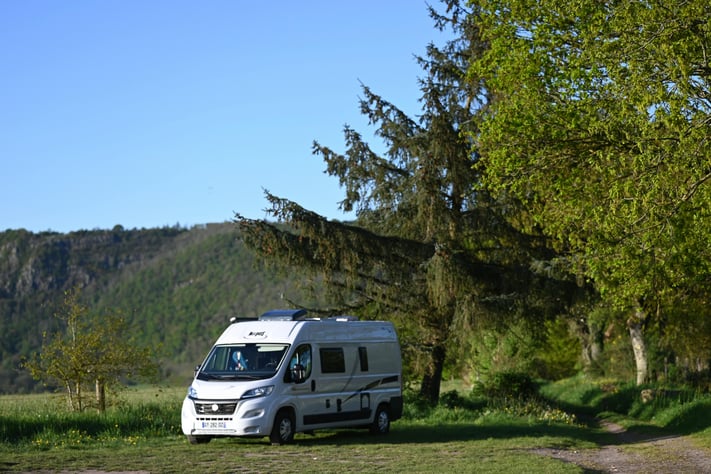
Test Drive and Operational Checks
If the RV is drivable, the test drive is essential. Begin by checking fluid levels and ensuring the engine starts easily. During the drive, listen for unusual noises, feel for vibrations, and observe the responsiveness of the brakes and steering. You’re looking for a smooth and quiet ride, a good indication of solid mechanical health.
Monitor the oil and temperature gauge while driving. Rising temperatures or fluctuating pressure could suggest mechanical concerns. When parked, inspect the engine for leaks or frayed belts. Also, confirm that all lights, mirrors, and wipers work correctly.
For towable RVs, inspect the hitch, coupler, and safety chains for proper fit. Ensure the trailer brakes engage smoothly when tested. Leveling systems, stabilizers, and slide-outs should move evenly and quietly. Operational checks like these help reveal whether the RV performs as expected when it matters most, on the open road.
Before wrapping up the used RV inspection, conduct a secondary walk through with your checklist in hand. Note any repairs or concerns that need attention and verify that all systems function together. This final step ties it all together, giving you a clear understanding of the RV’s true condition.
A detailed inspection not only prevents unexpected repair bills but also ensures peace of mind. When each section - exterior, interior, mechanical, and operational - receives proper attention, buyers can make informed decisions and look forward to exploring the next destination with trust in their new-to-them RV.
| Tip: If a seller hesitates to let you inspect the RV or test systems, walk away. |
DIY vs. Professional RV Inspection: Which Is Right for You?
Inspecting a used RV on your own can be rewarding, especially for experienced owners who understand how these systems work. A detailed checklist and a few basic tools can help uncover most visible issues. Buyers familiar with maintenance tasks like seal inspection, fluid checks, or appliance testing may feel comfortable handling the evaluation themselves. Performing the review personally also allows a closer connection to the vehicle, revealing subtle details that might go unnoticed during a quick walkthrough.
However, not every problem can be spotted with the naked eye. Some concerns, such as internal water damage, frame corrosion, or electrical irregularities, require specialized equipment and training to detect. In these cases, hiring a certified professional provides a deeper level of protection. An expert can run diagnostic tests, measure moisture content inside walls, and verify that all major systems meet safety standards.
If you’ve owned RVs before or are shopping for a smaller trailer, a DIY inspection may be enough. You’ll know what normal wear looks like and can identify common trouble areas.
However, if you’re buying a motorhome, luxury fifth wheel, or your first RV, it’s smart to bring in a professional. NRVIA-certified inspectors use moisture meters, borescopes, and diagnostic tools to uncover hidden problems before they cost you.
Or skip the stress. Every Campers Inn RV used unit is fully inspected and backed by our Integrity Pricing Promise.
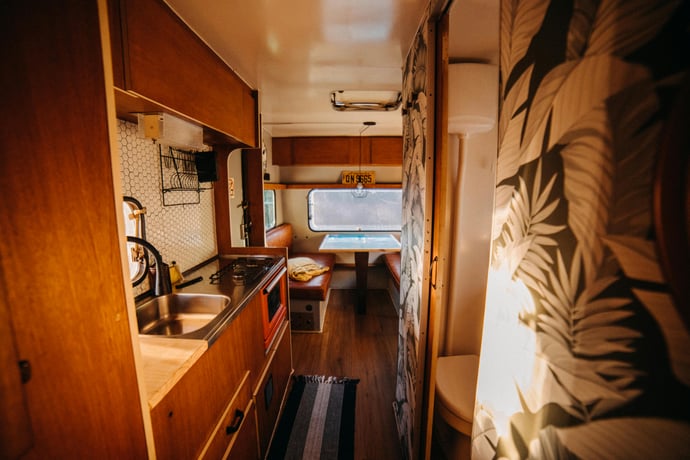
Common Red Flags When Buying a Used RV
Even with the most thorough used RV inspection, certain warning signs should immediately raise concern. Recognizing these issues early can save both time and money while preventing future disappointment.
Evidence of Water Damage
Water intrusion is one of the most costly and common issues found in pre-owned RVs. Look for stains, soft spots, or bubbling in walls and ceilings. Press gently on corners and around windows to detect hidden moisture. A musty smell often signals ongoing leaks.
Fresh Caulk or Paint
Recently applied sealant or paint may indicate an attempt to cover up existing problems. Check whether the repair work looks consistent across the RV. Mismatched areas or sloppy finishes often reveal that something was concealed rather than corrected.
Tire and Suspension Problems
Tires more than five years old, even if they appear new, can fail unexpectedly. Uneven wear may suggest alignment or suspension damage. Examine axles, springs, and stabilizers for rust or cracks before purchase.
Electrical or Plumbing Concerns
Loose wiring, flickering lights, or inconsistent water pressure are warning signs of deeper system issues. Inspect around outlets and under sinks for corrosion or water stains. A functioning system should run quietly and evenly.
Missing Maintenance Records
An RV’s service history tells the story of its care. If the seller cannot provide maintenance receipts or inspection documentation, proceed cautiously. Regular oil changes, seal checks, and system testing indicate responsible ownership.
When one or more of these red flags appear, pause before committing. Each issue has the potential to become a significant expense once ownership changes hands. A careful review, or professional inspection when in doubt, ensures peace of mind before starting any adventure.
Watch out for:
- Persistent roof leaks or visible mold
- Fresh paint or caulk covering problem areas
- Damaged or spliced wiring
- Uneven tire wear (can signal suspension issues)
- Missing or incomplete maintenance records
|
Tip: If a seller hesitates to let you inspect the RV or test systems, walk away. |
Printable Used RV Inspection Checklist
Having a printed checklist in hand makes it easy to stay organized while inspecting an RV lot or private seller's unit. You'll know exactly what to look for and can take notes for negotiation.
Want to skip the checklist altogether? Shop certified pre-owned RVs inspected by Campers Inn RV technicians.
Shop Inspected Used RVs You Can Trust
Peace of mind comes from knowing that every system, surface, and seal has been examined by professionals who understand RV construction inside and out. At Campers Inn RV, every used RV undergoes a multi-point inspection process to ensure quality and safety before it ever hits the lot. With our Integrity Pricing Promise, you’ll never pay hidden freight or prep fees, just honest, transparent pricing.
This inspection process allows buyers to focus on finding the right layout, features, and budget without worrying about hidden issues. When customers browse our used inventory, they can trust that the essentials have been verified for function and reliability. Transparency is central to how we operate. Every purchase includes a complete breakdown of what has been checked, repaired, or replaced, along with our Integrity Pricing Promise, which ensures no hidden fees or inflated costs.
For shoppers who prefer convenience, this professional review takes the guesswork out of buying used. It combines expert oversight with the personal assurance that each RV is ready for travel. Whether the goal is weekend camping or long-term touring, choosing a pre-inspected model means spending less time worrying about what might go wrong and more time planning where to go next.
Shop Inspected Used RVs Near You
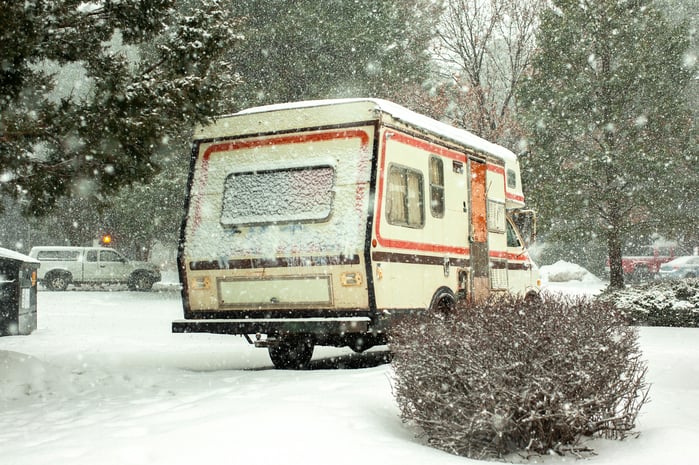
A used RV can open the door to incredible adventures, but confidence begins long before the first trip. A careful inspection can save you money, stress, and endless repair headaches down the road. Whether you’re buying your first rig or upgrading to your next, taking time to look closely pays off.
Requesting a complete inspection helps buyers make informed decisions and avoid the frustration of unexpected repairs. It also reinforces a deeper connection with the RV, creating trust in its ability to carry travelers wherever the road leads.
Whether you’re inspecting on your own or buying a pre-inspected RV, Campers Inn RV has you covered. We believe every journey should begin with confidence. Our inspected inventory and transparent buying process are built to help shoppers find reliable, road-ready RVs without second-guessing the quality or condition. With the right checklist and a trusted dealer, finding the perfect used RV becomes not only possible but enjoyable. Your adventure starts with knowledge and ends with the freedom to explore, knowing your RV is ready for the miles ahead.
Download the checklist today and start your next adventure the right way.
